Outdoor furniture serves as an extension of our living space, allowing us to enjoy the fresh air, entertain guests, and relax in the serenity of nature. However, exposure to various weather conditions can take a toll on outdoor furniture, leading to fading, rusting, and overall deterioration.
To ensure the longevity and beauty of your outdoor furniture, it is essential to take proactive steps in protecting it from all seasons. In this article, we will explore effective strategies and techniques to safeguard your outdoor furniture and keep it looking pristine for years to come.
Imagine spending a tranquil afternoon on your patio, lounging comfortably on your favorite outdoor sofa, surrounded by vibrant flowers and gentle breezes. Now, picture that same scenario, but with faded, worn-out furniture that has succumbed to the harsh elements. The difference is striking, highlighting the importance of protecting outdoor furniture from all seasons.
In This Post:
Understanding the importance of protecting outdoor furniture
Choosing the right materials for outdoor furniture
Metal types of furniture
Synthetic wicker
Using protective covers for outdoor furniture
Regular cleaning and maintenance
Storing outdoor furniture during harsh seasons
Additional tips for protecting outdoor furniture
Sealing wood with polyurethane and applying wax to metal for better protection
Conclusion
FAQs
Understanding the Importance of Protecting Outdoor Furniture
Outdoor furniture faces a myriad of challenges, including sun exposure, rain, humidity, and temperature fluctuations. Without proper protection, these elements can cause irreversible damage, such as discoloration, warping, mold growth, and rust. By implementing preventive measures, you can significantly extend the lifespan of your outdoor furniture, maintaining its functionality and aesthetic appeal.
“If you are looking for a way to style your space with wall art without breaking your piggy bank, then I recommend reading “10 Surprising Benefits of Printable Wall Art”
Choosing the Right Materials for Outdoor Furniture
Selecting the appropriate materials for outdoor furniture plays a crucial role in its durability and resistance to weathering. Here are some popular choices and their unique characteristics:
Wood
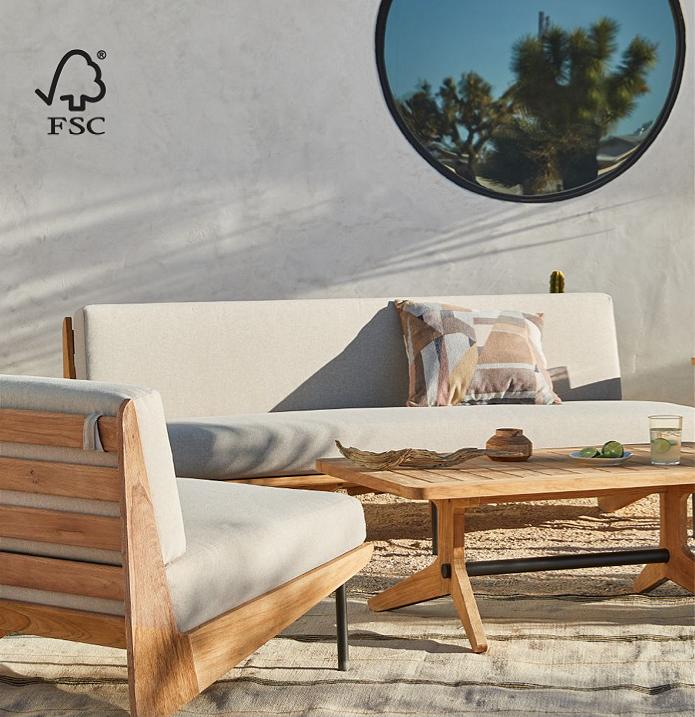
Wooden furniture exudes natural charm and elegance, but not all wood types are suitable for outdoor use. Opt for durable woods known for their weather resistance, such as teak and cedar.
Teak
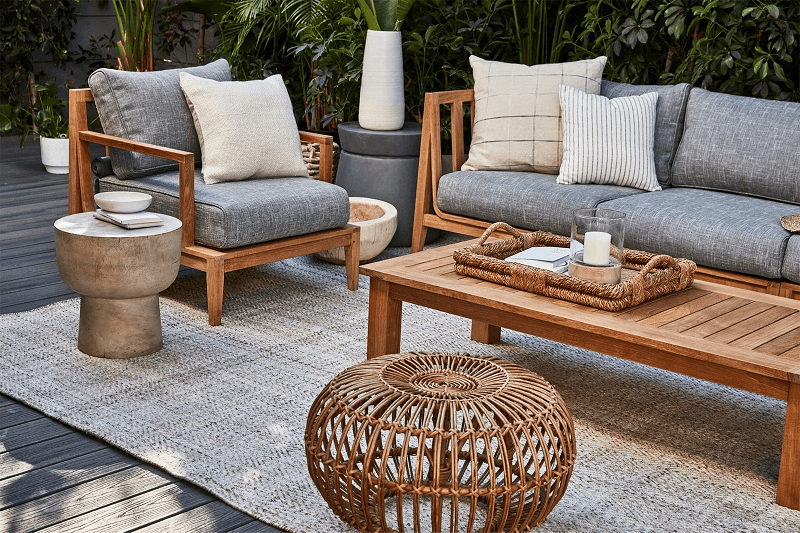
Teak is renowned for its exceptional resistance to moisture, insects, and decay. Its high oil content helps repel water and prevent cracking, making it an excellent choice for outdoor furniture.
Cedar
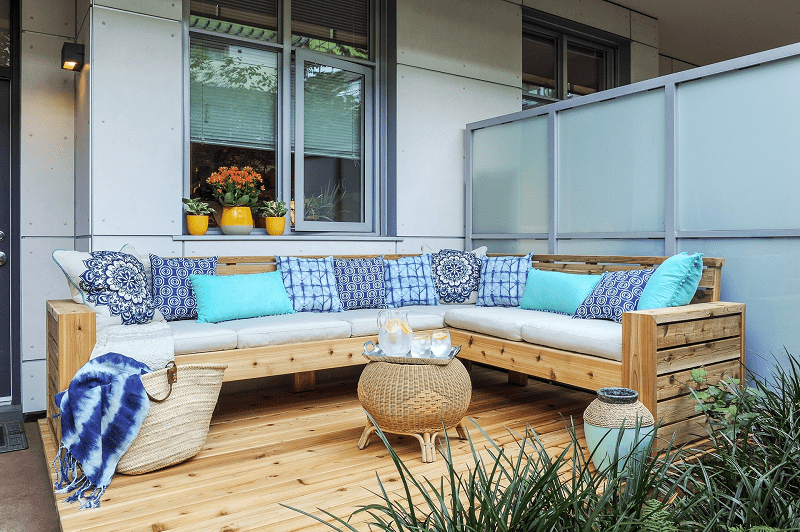
Cedar possesses natural oils that act as preservatives, making it resistant to decay, rot, and insect damage. Its pleasant aroma adds an inviting touch to your outdoor space while providing longevity.
Metal
Metal furniture offers durability and strength, but different metals require distinct protective measures to combat rust and corrosion.
Aluminum
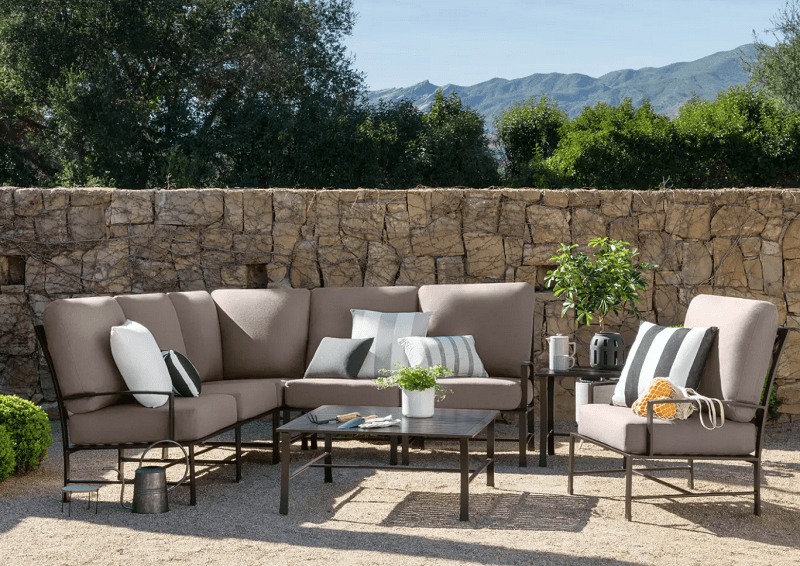
Aluminum furniture is lightweight, low-maintenance, and naturally resistant to rust. However, applying a protective coating can enhance its longevity and prevent oxidation.
Wrought Iron
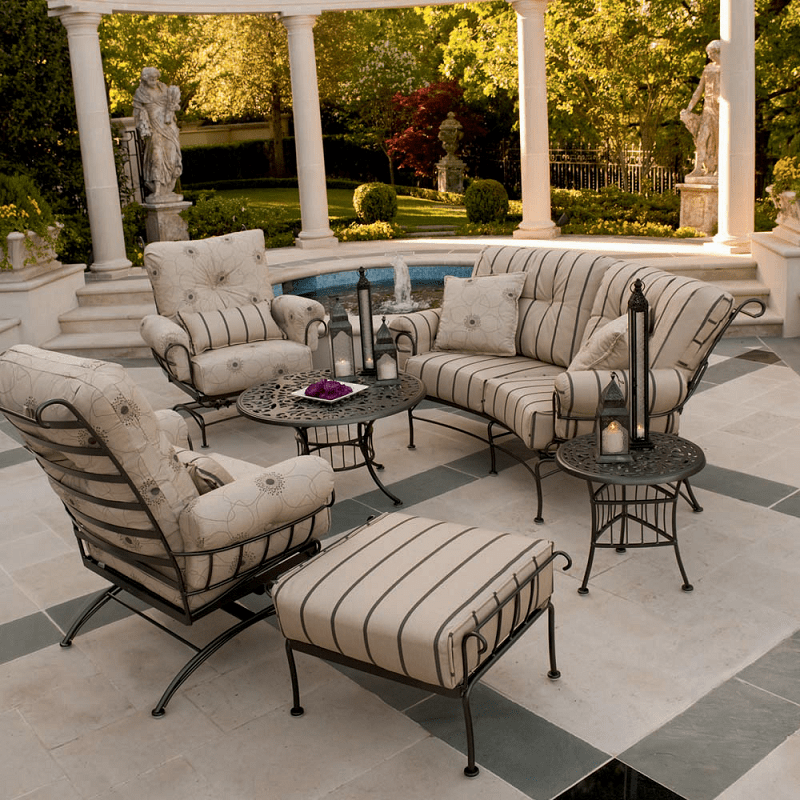
Wrought iron furniture exudes a classic, timeless appeal. To protect it from rust, regularly inspect for signs of damage and apply a rust-resistant paint or sealant when needed.
Synthetic Wicker
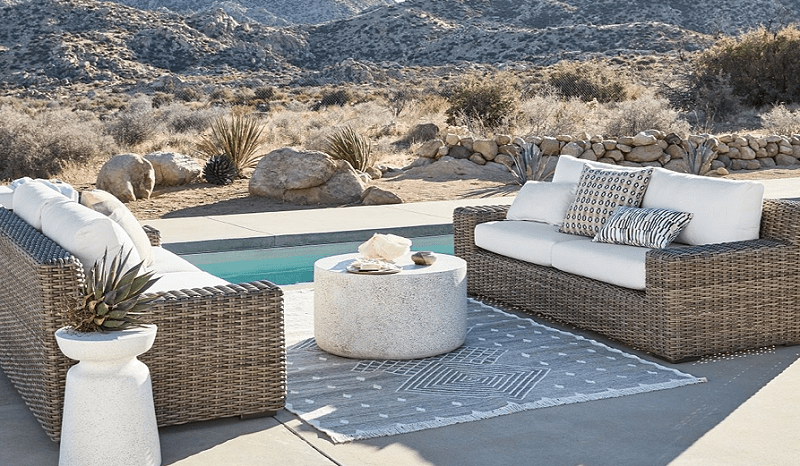
Synthetic wicker furniture combines the charm of natural materials with the durability of synthetic fibers. While synthetic wicker is inherently weather-resistant, it is still important to provide additional protection during harsh seasons.
Using Protective Covers for Outdoor Furniture
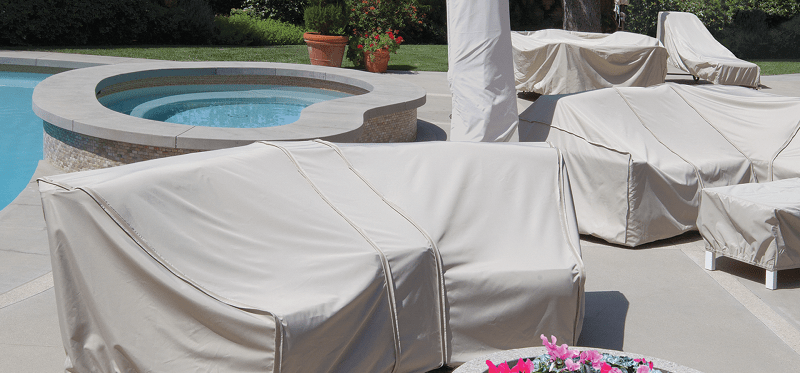
One of the simplest and most effective ways to shield outdoor furniture from the elements is by using protective covers. Consider the following types of covers:
Waterproof Covers
Waterproof covers provide a barrier against rain, preventing moisture from seeping into the furniture’s upholstery, cushions, or frames. Look for covers made from high-quality, durable materials that are specifically designed to withstand outdoor conditions.
UV-Resistant Covers
UV-resistant covers offer protection against the sun’s harmful rays, which can cause fading and deterioration of materials over time. These covers act as a shield, minimizing the impact of direct sunlight on your outdoor furniture.
Breathable Covers
Breathable covers are designed to allow air circulation while protecting furniture from dust, pollen, and mildew. These covers are especially beneficial in humid climates, as they prevent the buildup of moisture and condensation.
Regular Cleaning and Maintenance
Regular cleaning and maintenance are essential for preserving the beauty and functionality of outdoor furniture. Follow these tips for different materials:
Cleaning Tips for Different Materials
- Wood: Use a mild soap solution and a soft brush to remove dirt and grime. Rinse thoroughly and allow the furniture to dry completely.
- Metal: Wipe down with a damp cloth and mild detergent. Remove rust spots with a gentle abrasive or rust remover.
- Synthetic Wicker: Clean with a mixture of mild detergent and water using a soft brush. Rinse thoroughly and let it air dry.
Seasonal Maintenance Checklist
- Inspect for any signs of damage, such as loose joints, cracks, or rust.
- Tighten screws and bolts to ensure structural stability.
- Apply a protective sealant or coating if recommended by the manufacturer.
- Store removable cushions and upholstery during harsh weather conditions.
Storing Outdoor Furniture During Harsh Seasons
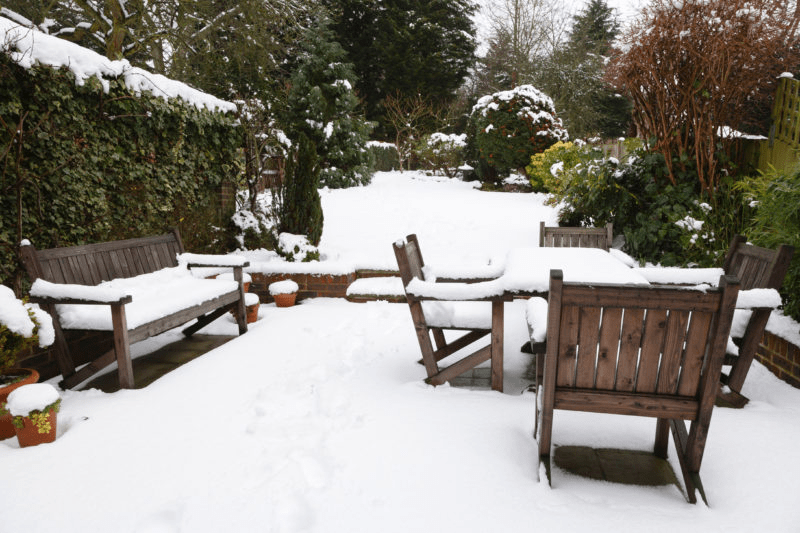
In regions with extreme weather conditions, it may be necessary to store outdoor furniture during certain seasons. Here are some tips for different scenarios:
Winter Storage
If you experience freezing temperatures and heavy snowfall during winter, it is advisable to store your outdoor furniture in a dry, sheltered area. Clean the furniture thoroughly, apply protective coatings if needed, and cover it with waterproof sheets or tarps to prevent moisture damage.
Protecting Furniture During the Rainy Season
During the rainy season, it is crucial to protect your outdoor furniture from excessive moisture. Position furniture away from areas prone to pooling water or invest in waterproof covers to prevent water from seeping into the furniture.
Additional Tips for Protecting Outdoor Furniture
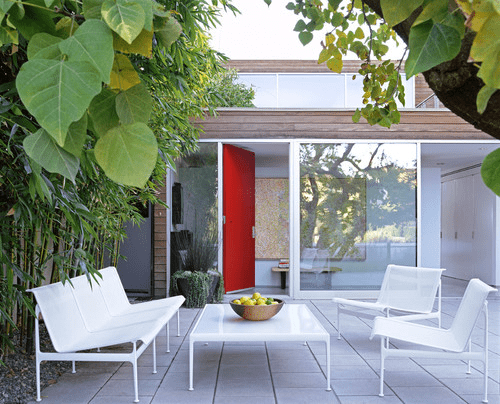
In addition to the aforementioned measures, here are some additional tips to safeguard your outdoor furniture:
Positioning Furniture Strategically
Place furniture in a covered or shaded area to minimize direct exposure to the sun and other elements. This helps reduce the risk of fading and deterioration.
Using Furniture Pads and Glides
To prevent scratches or damage to your deck or patio, attach furniture pads or glides to the legs of your outdoor furniture. These protective accessories also make it easier to move the furniture when needed.
Applying Protective Coatings
Consider applying protective coatings, such as sealants or paint, to wood or metal furniture. These coatings add an extra layer of protection against moisture, UV rays, and other environmental factors. Below you’ll find out the most popular protective coating for each type of furniture.
Protecting Cushion Fabric with a Spray-On Sun and Water Shield
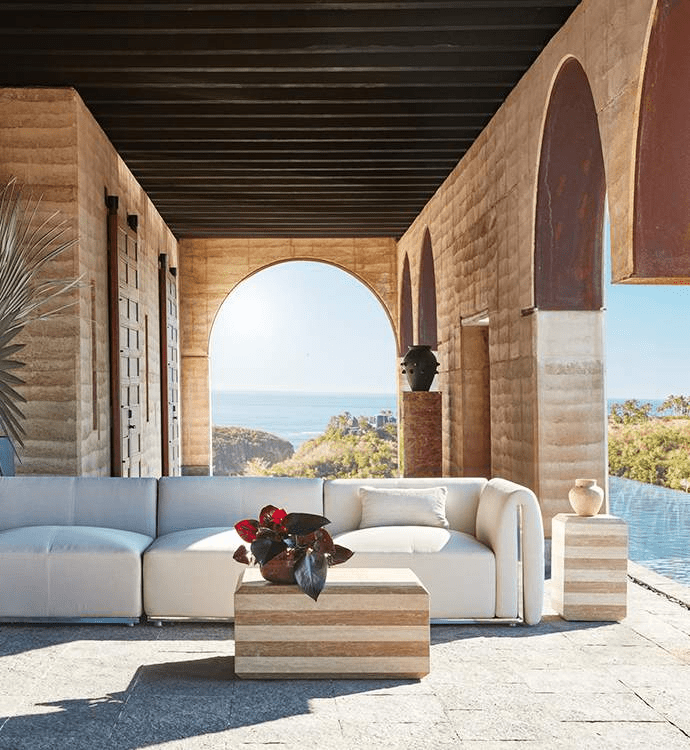
In addition to safeguarding the structure of your outdoor furniture, it is equally important to protect the fabric of your cushions. Cushions are susceptible to damage from prolonged exposure to the sun’s UV rays and moisture from rain or other sources. To ensure the longevity and vibrancy of your cushion fabric, consider using a spray-on sun and water shield.
A spray-on sun and water shield is a protective product specifically designed to create a barrier between the cushion fabric and the elements. Here’s how you can effectively use it to safeguard your cushions:
- Clean the cushions: Before applying the spray-on shield, make sure the cushions are clean and free from any dirt, stains, or debris. Follow the manufacturer’s instructions for cleaning the fabric, whether it’s through hand washing or machine washing.
- Choose a suitable spray-on shield: Look for a spray-on product that is specifically formulated for outdoor fabrics and provides UV protection. Read the label carefully to ensure it is suitable for your cushion fabric material.
- Test on a small area: Before applying the spray-on shield to the entire cushion, test it on a small, inconspicuous area to ensure compatibility and to check for any adverse reactions.
- Apply the spray evenly: Shake the spray bottle well and hold it approximately 6 to 8 inches away from the cushion fabric. Spray a thin, even layer, moving the bottle in a sweeping motion to cover the entire surface. Be sure to cover both sides of the cushions.
- Allow drying time: After applying the spray, allow the cushions to dry completely. Follow the manufacturer’s instructions regarding the drying time, as it may vary depending on the product.
- Reapply as necessary: Over time, the protective coating provided by the spray-on shield may wear off due to exposure to the elements. Therefore, it is recommended to reapply the spray periodically or as directed by the product manufacturer. This will help maintain the protective barrier and extend the life of your cushion fabric.
By using a spray-on sun and water shield, you can add an extra layer of protection to your cushion fabric, effectively reducing the risk of fading, discoloration, and moisture damage. Remember to follow the instructions provided by the manufacturer for the best results.
Now, you can enjoy your outdoor furniture with the peace of mind that your cushions are well-protected and will continue to enhance the comfort and aesthetic appeal of your outdoor space.
Sealing Wood with Polyurethane and Applying Wax to Metal and Aluminum for Better Protection
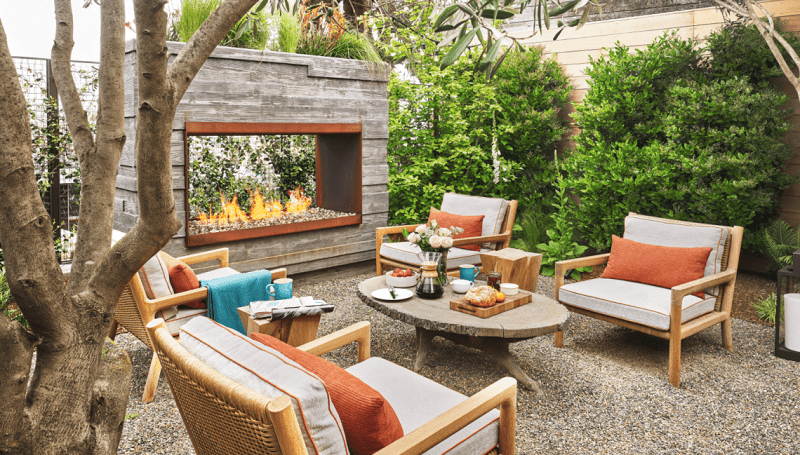
When it comes to protecting outdoor furniture, different materials require specific measures. In addition to the strategies mentioned earlier, sealing wood with polyurethane and applying wax to metal and aluminum surfaces can provide an extra layer of protection against the elements. Let’s explore these methods in more detail:
Sealing Wood with Polyurethane: Wood furniture, especially those made from porous woods like teak or cedar, can benefit from a protective sealant like polyurethane. Here’s how you can seal wood furniture effectively:
- Prepare the wood: Ensure the wood surface is clean, dry, and free from any dust or debris. Sand the furniture lightly if necessary to create a smooth surface.
- Choose the right polyurethane: Select a high-quality polyurethane sealant suitable for outdoor use. Consider using an oil-based polyurethane as it provides excellent durability and resistance to moisture.
- Apply the polyurethane: Using a clean brush or foam applicator, apply a thin and even coat of polyurethane to the wood furniture. Follow the manufacturer’s instructions regarding the drying time and the number of coats required. Usually, two to three coats are recommended for optimal protection.
- Sand between coats: For a smooth and flawless finish, lightly sand the furniture between each coat of polyurethane using fine-grit sandpaper. This helps remove any imperfections and promotes adhesion between the layers.
- Allow complete drying: After applying the final coat, allow the polyurethane to dry completely according to the manufacturer’s instructions. This curing process ensures the formation of a strong and protective barrier on the wood surface.
Sealing wood furniture with polyurethane helps to repel moisture, minimize cracking, and protect the natural beauty of the wood. It also adds a layer of defense against UV rays, preventing fading and discoloration.
Applying Wax to Metal and Aluminum: Metal and aluminum furniture can benefit from a wax coating to protect against rust and corrosion. Here’s how you can apply wax to these surfaces:
- Clean the surfaces: Before applying wax, thoroughly clean the metal or aluminum furniture to remove any dirt, grime, or rust. Use a mild detergent or a specialized metal cleaner and a soft cloth or sponge.
- Choose a suitable wax: Look for a wax product specifically formulated for metal or aluminum surfaces. Opt for a wax that provides both protective and polishing properties.
- Apply the wax: Take a small amount of wax on a clean cloth or applicator pad and apply it evenly to the metal or aluminum surface. Work in small sections and ensure complete coverage.
- Buff the surface: Using a clean cloth or a buffing pad, gently buff the waxed surface in circular motions. This helps to evenly distribute the wax and achieve a smooth, shiny finish.
- Reapply as needed: Over time, the wax coating may wear off due to exposure to the elements. Monitor the furniture regularly and reapply wax as necessary to maintain its protective properties.
Applying wax to metal and aluminum furniture forms a protective barrier that helps prevent oxidation, rust, and corrosion. It also enhances the shine and appearance of the furniture, making it more visually appealing.
By sealing wood with polyurethane and applying wax to metal and aluminum surfaces, you can provide an additional layer of protection to your outdoor furniture. These measures help to maintain the integrity, durability, and aesthetics of the materials, ensuring that your furniture withstands the challenges posed by different seasons and weather conditions.
Most Popular Post:
10 Surprising Benefits of Printable Wall Art
15 Must-Have Accessories For Styling A Coffee Table
How to Choose the Perfect Interior Color Scheme for Your Home
Expert Guide On How To Buy A Rug For Each Room
Conclusion
Protecting your outdoor furniture from all seasons is crucial for maintaining its longevity and aesthetic appeal. By choosing the right materials, using protective covers, practicing regular cleaning and maintenance, and storing furniture when necessary, you can enjoy your outdoor oasis for years to come. Remember to follow the specific care instructions provided by manufacturers for each type of furniture to ensure optimal protection and longevity.
FAQs
Q: How often should I clean my outdoor furniture?
A: It is recommended to clean outdoor furniture at least twice a year, or more frequently if it becomes visibly dirty or stained.
Q: Can I leave my outdoor furniture uncovered during winter?
A: In regions with freezing temperatures and heavy snowfall, it is advisable to store outdoor furniture in a dry, sheltered area during winter to prevent damage.
Q: How do I protect metal furniture from rust?
A: Regular cleaning, applying protective coatings, and promptly addressing any signs of rust or damage can help protect metal furniture from rusting.
Q: Are there any natural remedies for cleaning outdoor furniture?
A: Yes, some natural remedies include using vinegar and water solution, lemon juice, or mild soap mixed with water for cleaning outdoor furniture.
Q: Can I use regular household cleaners for cleaning outdoor furniture?
A: It is best to check the manufacturer’s recommendations before using any cleaning products. Some household cleaners may contain chemicals that can damage outdoor furniture, especially those made from specific materials like wood or metal.
CATCH THE LATEST IN HOME DECOR TRENDS:

Steal These 15 Expert-Approved Decorating Secrets

How To Accessories Your Living Room
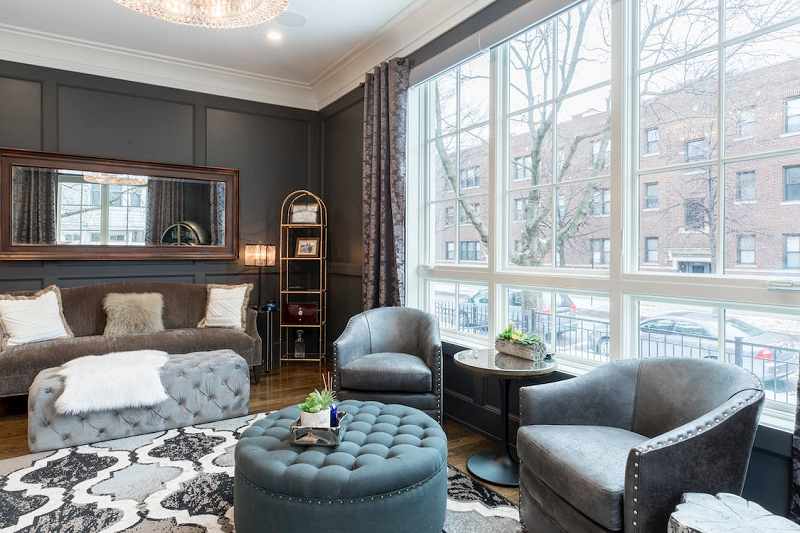
Small Space? 10 Ways To Make A Room Appear Bigger

Make Your space Look Expensive
GET CAUGHT UP ON ALL THE INSPIRING DECOR TIPS:

18 Fresh Decorating Ideas To Update Your Fireplace

How To Create An Art Gallery Wall

